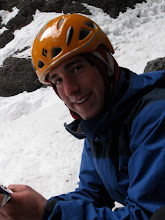



Where the roads end, where the earth drops off, where waterfalls freeze, where the air is thin, thats where you'll find us and thats where these adventures take place.










 Drugs, Tricks, and Snake Venom Potion: There are a number of drugs on the market that are supposed to help reduce the effects of altitude. I am not a doctor but I do see the effects of these drugs. Do your own research. Doctors (medical experts not mountain experts) tend to prescribe them like they would antibiotics for an infection, that is automatically.
Drugs, Tricks, and Snake Venom Potion: There are a number of drugs on the market that are supposed to help reduce the effects of altitude. I am not a doctor but I do see the effects of these drugs. Do your own research. Doctors (medical experts not mountain experts) tend to prescribe them like they would antibiotics for an infection, that is automatically. 





 I often get questions about training for climbing. Unfortunately, these questions often come during a trip when it is too late. Hopefully, I can address some common questions about training for Rainier or other mountaineering trips or training for rock climbing or ice climbing. I will try to keep it simple and general. Please comment with any questions you might have so I can address them.
I often get questions about training for climbing. Unfortunately, these questions often come during a trip when it is too late. Hopefully, I can address some common questions about training for Rainier or other mountaineering trips or training for rock climbing or ice climbing. I will try to keep it simple and general. Please comment with any questions you might have so I can address them.